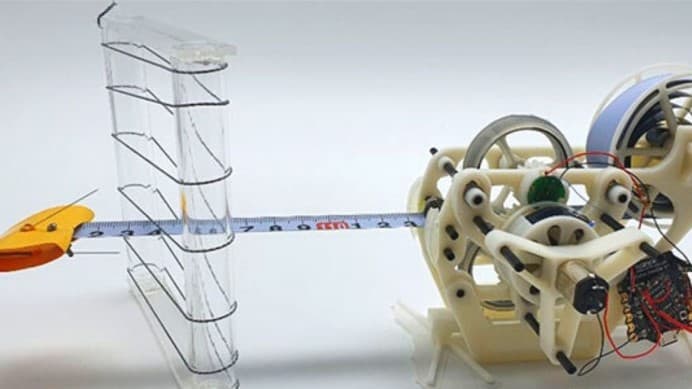Chameleon-Like Robot Tongue Can Pluck Objects in a Heartbeat
Researchers have created a chameleon-like robot tongue that plucks nearby objects in a heartbeat.
Everyone knows chameleons are slow lizards, but this reputation contrasts sharply with the reality of their tongues, which accelerate at incredible speeds — plucking insects before they know what’s happening.
Taking a cue from this marvel of nature, researchers in South Korea developed a robot tongue capable of shooting out to pluck nearby objects in the blink of an eye, according to a study recently published in the journal IEEE Robotics and Automation Letters.
Called “Snatcher,” the researchers think the new robot tongue might see use in drones and other robots to collect items without getting too close for comfort.
“For example, a quadrotor with this manipulator will be able to snatch distant targets, instead of hovering and picking up,” said researcher Gwang-Pil Jung of Seoul National University of Science and Technology (SeoulTech), who was co-designer of the new robot tongue.
Of course, this isn’t the first research into chameleon-like robot tongues. But Snatcher breaks with precedent because it packs a chameleon-tongue fast-snatching machine into a portable robot. It’s only 4.7-by-3.3-by-3.3 inches (12-by-8.5-8.5 cm), and weighs less than 0.26 lbs (120 grams).
Notably, it can pluck objects weighing up to 0.06 lbs (30 grams) from 31.5 inches (80 cm) away, in less than 600 milliseconds, reports Spectrum IEEE’s Tech Talk.
To create the robot, Snatcher, Jung and a SeoulTech colleague named Dong-Jun Lee developed a new spring-like device controlled with active clutch in conjunction with a single series elastic actuator. It receives power from a wind-up spring, which sends a steel tapeline — just like a chameleon’s tongue — through two geared feeders.
The Snatcher’s clutch gives it the ability to perform a rapid unwind in one direction and then retract again, with a simple switch of the geared wheel between driving either the forward or backward feeder.




